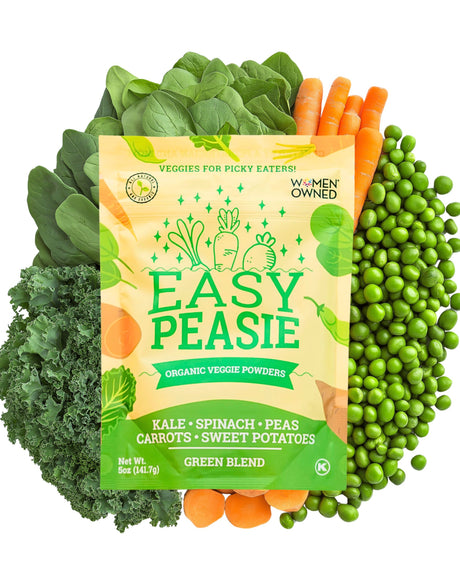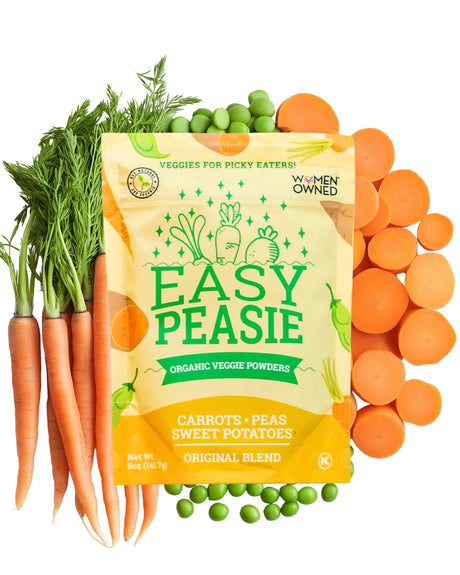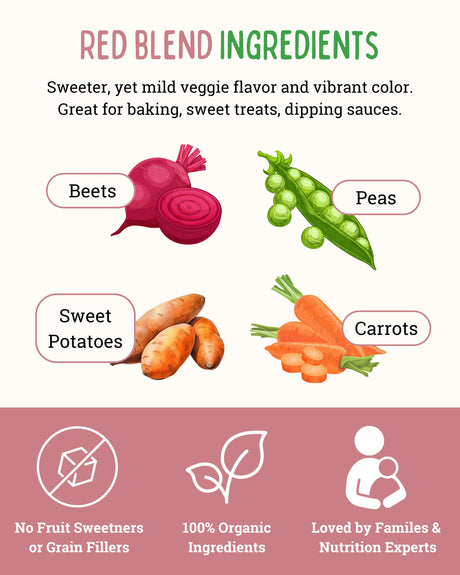Water: The Essential Lifeline in Rising Temperatures
With increasing temperatures becoming a pressing concern across parts of the USA, the significance of hydration takes center stage. Water is more than just a basic need; it's the foundation of our health, ensuring every cell and organ in our body operates at its best.
Especially during these hotter days, our bodies lean heavily on water to regulate temperature and maintain our cool.
Navigating the Hydration Challenge
Yet, even with the heat bearing down, many parents face a familiar challenge: persuading their kids to consistently opt for water over sugary alternatives. As the risks of dehydration mount with the escalating heat, the appeal of sweetened drinks often eclipses the crucial habit of regular water consumption.
In this article, we'll explore the importance of staying hydrated and present creative strategies to make drinking water both enjoyable and a regular routine for children.
Understanding Hydration
Water: The Essential Component of Life
Water is fundamental to our existence. It's not just about quenching thirst; it's the foundation of nearly every bodily function. From individual cells to vital organs, water is the element that keeps the machinery of our body running seamlessly.
More Than Just a Drink: Water's Multifaceted Role
Beyond satisfying thirst, water plays a crucial role in digestion, aiding in breaking down the food we consume and assisting in nutrient absorption. It acts as the transportation system for our blood, ensuring circulation delivers oxygen and essential nutrients to every cell.
Additionally, water is our body's natural cooling system, helping regulate temperature, especially critical during those intense summer heatwaves.
The Ripple Effect: Dehydration's Impact on the Body
The absence of adequate water can have significant repercussions, especially for children. Dehydration isn't just about feeling parched. It can lead to symptoms like fatigue, dizziness, and cognitive challenges.
For children, who are still growing and developing, maintaining hydration is crucial. A dehydrated child may experience mood fluctuations, diminished concentration, and in severe cases, heat-related illnesses.
Recognizing these signs and ensuring our kids stay hydrated is not only a matter of well-being but also a health priority.
The Impact of Higher Temperatures on Hydration Needs
Turning Up the Heat: Body's Amplified Thirst
As the temperature rises, so does our body's demand for water. Heat and humidity work in tandem to increase our perspiration rate, a natural mechanism to cool down the body.
But with this increased sweating, we're losing more fluids and essential salts. This heightened loss means our hydration needs are also elevated, making it essential to up our water intake during those sweltering days.
Hot Weather Hazards: The Dehydration Risk
Hot weather isn't just about sunburns and seeking shade. The real danger often lurks beneath the surface, in the form of dehydration.
When the body can't compensate for the fluid loss through sweating, dehydration sets in. This can lead to more severe conditions like heat exhaustion or, in extreme cases, heat stroke.
Symptoms can range from mild headaches and fatigue to severe dizziness, rapid heartbeat, and even fainting.

Young Athletes and Summer Play: A Special Note
For kids who revel in summer sports or just love playing outdoors, the hydration stakes are even higher. Their smaller bodies heat up faster than adults, making them more susceptible to dehydration.
Whether it's a soccer match or a simple game of tag, active kids can lose fluids rapidly. Parents need to be extra vigilant, ensuring these young athletes and outdoor enthusiasts are not only drinking water during their activities but also before and after.
It's all about keeping them safe, hydrated, and ready for the next summer adventure!
Signs of Proper Hydration and Dehydration in Kids
Physical Indicators: The Body's Hydration Dashboard
One of the most straightforward ways to gauge hydration levels is by observing the color of a child's urine. Light, pale yellow indicates proper hydration, while a darker hue suggests it's time to drink up.
But urine color isn't the only telltale sign. Dry or chapped lips, sunken eyes, and a noticeable decrease in energy or fatigue can all hint at a body thirsty for more fluids.
Additionally, if your child complains of a dry mouth or throat, or if their skin seems less elastic than usual, these could be signs that they need to hydrate.
Behavioral Clues: When Thirst Affects Mood and Mind
It's not just the body that sends out SOS signals when hydration levels dip; behavior can also change. A usually chirpy child might become irritable or moody.
Lack of concentration, a decreased interest in play, or even headaches can be attributed to insufficient hydration. It's essential to recognize these subtle shifts in behavior, especially since kids might not always vocalize their thirst or might not associate their feelings with the need for water.
By staying attuned to these signs, parents can ensure their little ones remain hydrated, happy, and at their energetic best.
Making Hydration Fun: Creative Ideas
Infused Water: A Splash of Flavor Without the Sugar
One of the simplest ways to make water more appealing is by giving it a hint of natural flavor. Infusing water with slices of fruits like strawberries, cucumbers, or lemons can transform plain water into a refreshing beverage.
For an aromatic twist, consider adding herbs like mint or basil. Not only does this make the water taste delightful, but it also adds a pop of color, making it visually appealing, especially to the younger ones.

Fun Ice Cubes: Chill Out with Style
Ice doesn't have to be boring. By using shaped ice cube trays - think stars, hearts, or even dinosaurs - drinking water becomes an adventure.
For an extra touch of fun, freeze small pieces of fruit, like berries or citrus slices, inside the ice cubes. As they melt, they'll infuse the water with a subtle flavor, and kids will love the surprise inside!
Hydration Challenges: Turn Drinking Water into a Game
Kids love challenges, especially when there's a reward at the end. Set daily or weekly water-drinking goals and track their progress.
Every time they meet their hydration target, reward them with a small treat or privilege. It could be as simple as an extra story at bedtime or a sticker on a reward chart.
This not only encourages them to drink more but also teaches them about setting and achieving goals.
Interactive Water Bottles: More Than Just a Container
Gone are the days when a water bottle was just a vessel. Now, they come with time markers, stickers, and even tech features that remind kids to take a sip.
Some bottles have sections to be filled each hour, turning hydration into a fun, day-long activity. Others might come with a companion app or digital rewards.
Investing in an interactive bottle can make a world of difference in a child's drinking habits.
DIY Popsicles: A Cool Way to Hydrate
Who said you can only drink your water? Turning hydration into a frozen treat is a surefire way to get kids excited. Mix water with natural fruit juices, pour them into popsicle molds, and freeze.
Not only are these popsicles a healthier alternative to store-bought ones, but they're also a sneaky way to up water intake on hot days. Plus, making them can be a fun family activity!
Educating Kids on the Importance of Drinking Water
Fun Facts: Water and the Wonders of the Human Body
Did you know that our bodies are made up of about 60% water? That's more than half! And our brains? A whopping 73% water.
These aren't just numbers; they're a testament to how vital water is to our very existence. For kids, understanding these fun facts can be both intriguing and enlightening.
You can share tidbits like how the body loses about 8 cups of water a day just through breathing, sweating, and going to the bathroom. Or how, without water, a person can only survive for about 3-5 days.
These facts can spark curiosity and underscore the importance of staying hydrated.
Interactive Learning: Games and Apps for Hydration Education
In today's digital age, there's an app for almost everything - including hydration! There are interactive games and apps designed specifically to teach kids about the importance of drinking water.
Some apps offer virtual plants or pets that need water to grow, mirroring the player's own hydration needs. Others turn drinking water into a fun challenge, with rewards and badges for meeting daily goals.
By making hydration interactive and gamified, kids are more likely to engage and understand its significance.
Storytelling: A Drop of Wisdom Through Words
Stories have a unique way of resonating with us, no matter our age. For kids, a well-told tale can be both entertaining and educational.
Consider sharing stories or books that emphasize the importance of water. Whether it's a tale of a parched desert that rejoices when rain finally comes or a story of a young hero who embarks on a quest to find a clean water source for their village, narratives can drive home the message.
Through the adventures of characters and the weaving of words, children can grasp the crucial role water plays in our lives and the world around us.
Tips for Parents
Leading by Example: Show, Don't Just Tell
We've all heard the saying, "actions speak louder than words," and when it comes to hydration, this couldn't be truer.
As parents, our habits often become the blueprint for our children. If they see us reaching for a glass of water first thing in the morning, sipping throughout the day, and prioritizing hydration, they're more likely to mirror these behaviors. It's not just about telling them to drink water, but showing them its importance through our own actions.
So, next time you're feeling a bit parched, vocalize it! Let your child see you quenching your thirst and discuss how refreshing and revitalizing it feels.
Setting a Schedule: Timed Sips and Gulps
Especially during the warmer months or when kids are engaged in outdoor activities, it's crucial to ensure they're drinking water at regular intervals.
Consider setting up "hydration breaks." Maybe it's every hour on the hour, or perhaps it's after each game or activity. Whatever the cadence, having a routine can make it easier for kids to remember to drink up.
And don't forget to pack enough water if you're heading out for a day trip or picnic. Those little sips throughout the day can make a world of difference in keeping them hydrated and energetic.

Monitoring Hydration: Keeping Tabs on Intake
While we don't want to turn water-drinking into a chore or something stressful, it can be helpful to have a general idea of how much water our kids are consuming.
This doesn't mean measuring every ounce, but perhaps having a designated water bottle that they aim to finish a couple of times a day. Some bottles even come with time markers, giving kids a visual cue of where they should be by a certain time.
Celebrate the little victories, like when they finish their water or make an effort to drink more than usual. Remember, it's all about fostering healthy habits in a positive, encouraging way.
Final Thoughts
The Vital Role of Hydration
As we've journeyed through the nuances of hydration, one thing remains crystal clear: water is an essential lifeline, especially during those sweltering summer months. It's not just about quenching thirst but ensuring that our little ones' bodies function optimally.
From aiding digestion to keeping their energy levels steady, water plays a myriad of roles that can't be overlooked. And as temperatures soar, the need for hydration only intensifies. It's our responsibility to ensure that our children are well-equipped to face the heat, and that starts with a full water bottle in hand.
A Call to Action for Parents
But understanding the importance of hydration is just the first step. The real challenge lies in translating that knowledge into action. It's about being proactive, anticipating the needs of our children before they even realize they're thirsty.
And yes, while there might be some resistance or forgetfulness along the way, with a dash of creativity and a sprinkle of persistence, we can make water-drinking second nature for them. So, let's fill up those bottles, infuse some fun flavors, and lead by example.
Because every sip counts, and together, we can make hydration a habit that sticks. Cheers to happy, hydrated kids!













